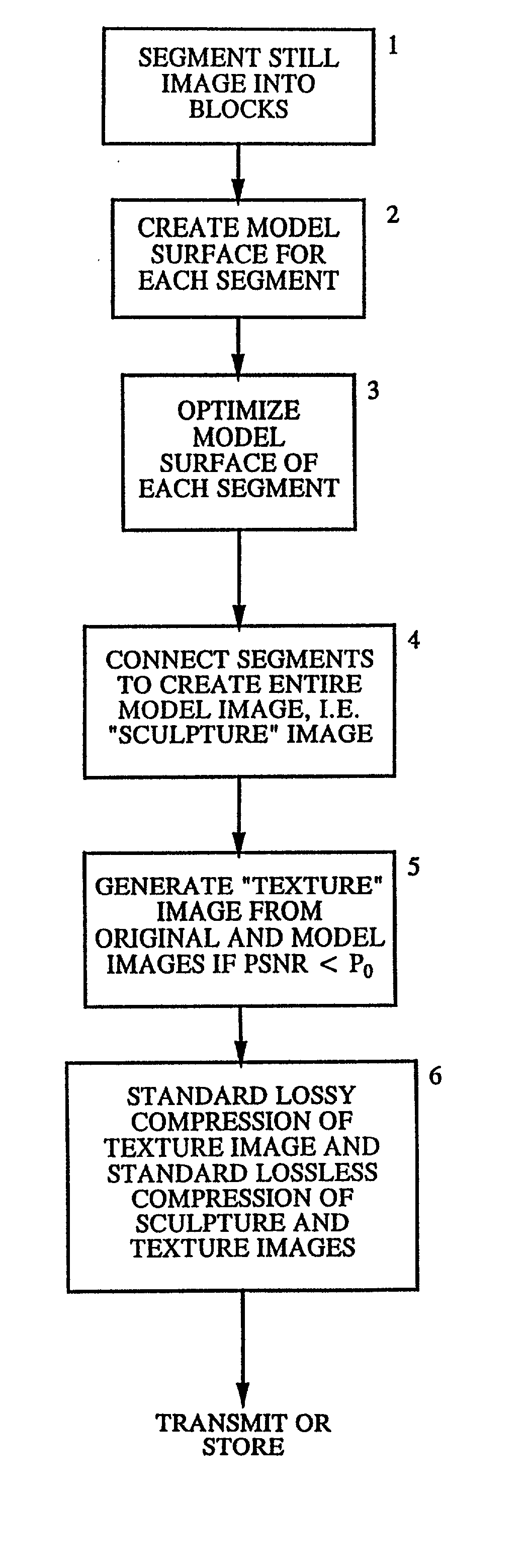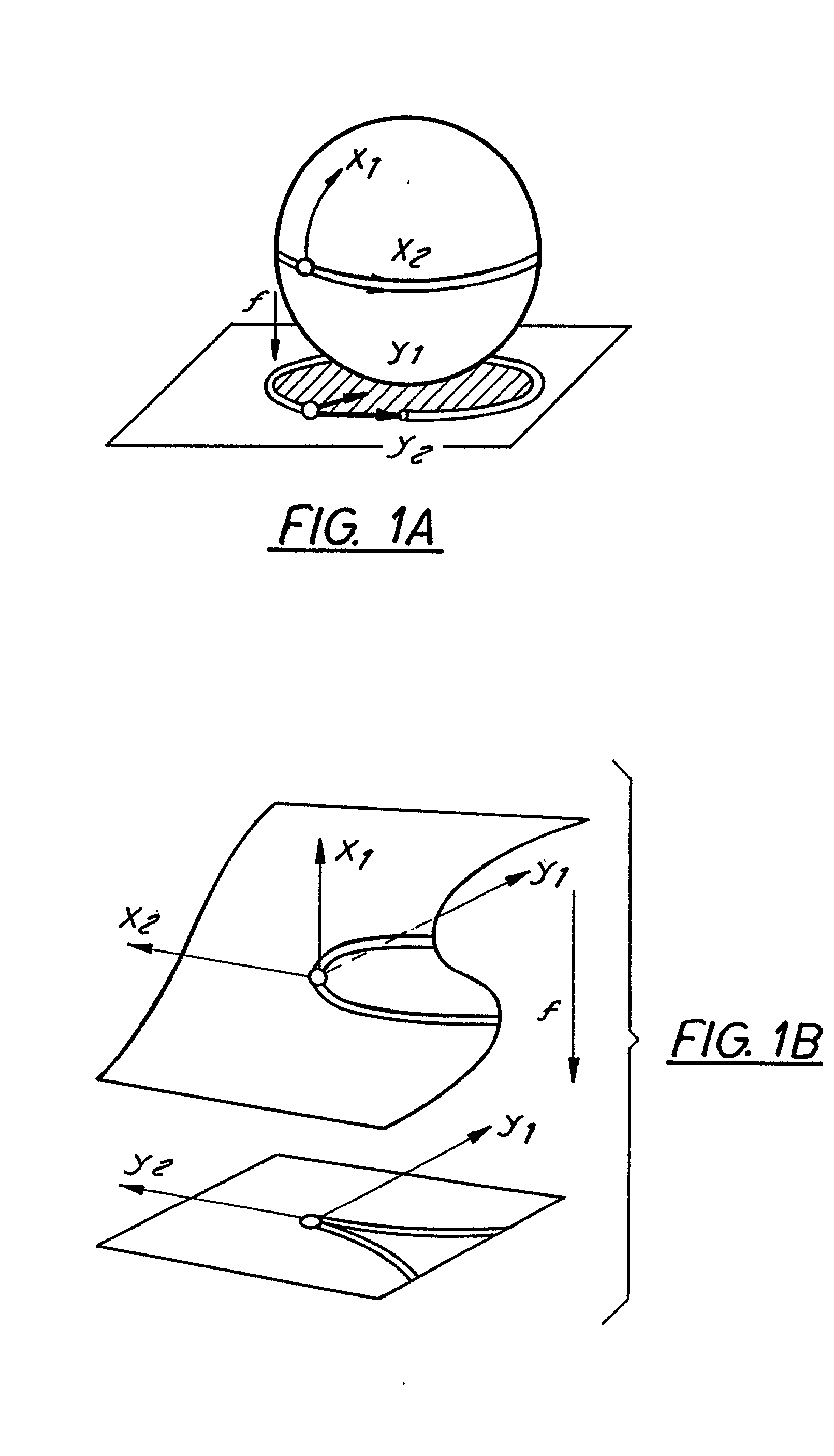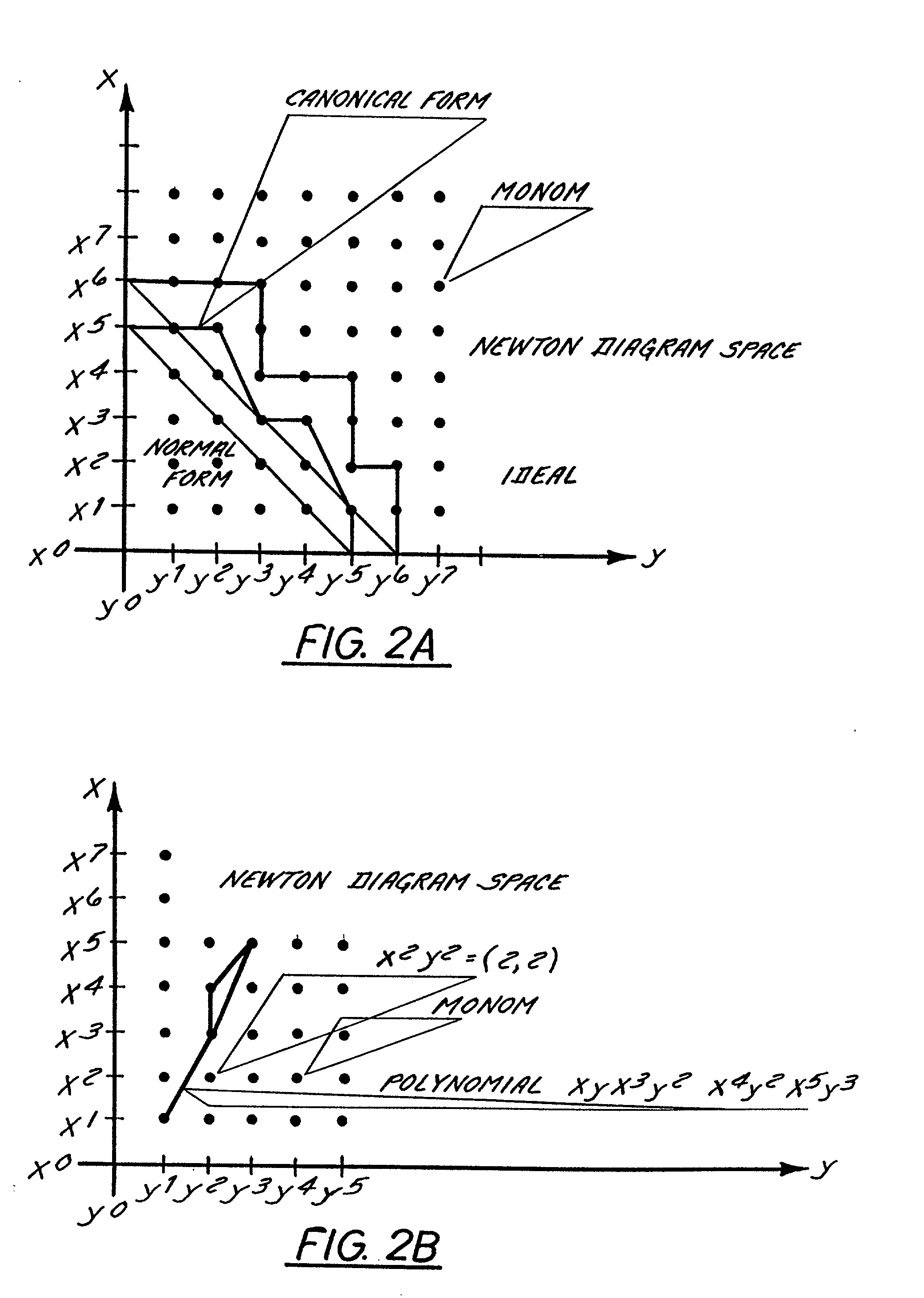Method of isomorphic singular manifold projection still/video imagery compression
a technology compression method, which is applied in the field of isomorphic singular manifold projection still/video imagery compression, can solve the problems of information loss, lossy compression reduces the amount of image data stored and transmitted, and most applications in which image information is stored and/or transmitted would be rendered impossible or impractical
- Summary
- Abstract
- Description
- Claims
- Application Information
AI Technical Summary
Benefits of technology
Problems solved by technology
Method used
Image
Examples
example 2
Cylinder with Given Luminance Dependence
[0166] Mapping of a cylinder with a given constant luminance dependence is shown in FIG. 5 and described as follows:
B=f(.xi., .eta.). (16)
[0167] In a cylindrical coordinate system (where axis y coincides with the axis of the cylinder), x=.alpha., where .alpha. is angle .angle.BOA, and z is distance OB (or, radius).
[0168] Two parametric coordinates, .xi.=.alpha., where .alpha. is angle .angle.BOA (A is the central point of cylinder, B is a given point); y is the axial coordinate, and z (=R, where R is const) is the radius vector (OB). That the w-parameter must be proportional to B, everywhere must be taken into account. This means that B does not create any singularities. For new coordinates on the image plane:
u=R sin (.xi.) (17A)
v=.eta. (17B)
w=C.multidot.B+f(.xi., .eta.); C=const.noteq.0. (17C)
[0169] On the other hand, a geometrical analysis of transformation Eq. (9A) shows that y- does not produce any singularities (since y is an axial coordi...
PUM
 Login to View More
Login to View More Abstract
Description
Claims
Application Information
 Login to View More
Login to View More - R&D
- Intellectual Property
- Life Sciences
- Materials
- Tech Scout
- Unparalleled Data Quality
- Higher Quality Content
- 60% Fewer Hallucinations
Browse by: Latest US Patents, China's latest patents, Technical Efficacy Thesaurus, Application Domain, Technology Topic, Popular Technical Reports.
© 2025 PatSnap. All rights reserved.Legal|Privacy policy|Modern Slavery Act Transparency Statement|Sitemap|About US| Contact US: help@patsnap.com



